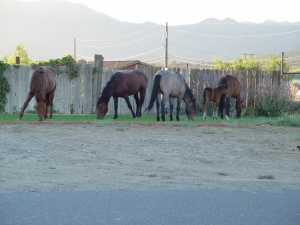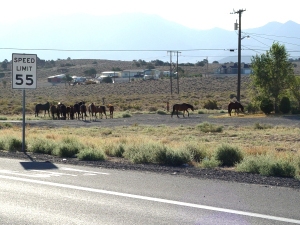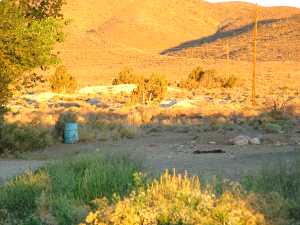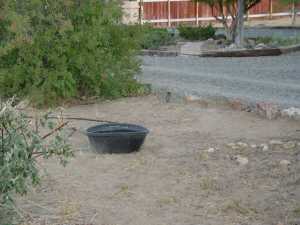|
Local "Do Gooders" Spoil Wild Bands
By Willis Lamm |
A small band grazing on a resident's lawn
|
The popular "Buckskin Band" of Mound House, Nevada
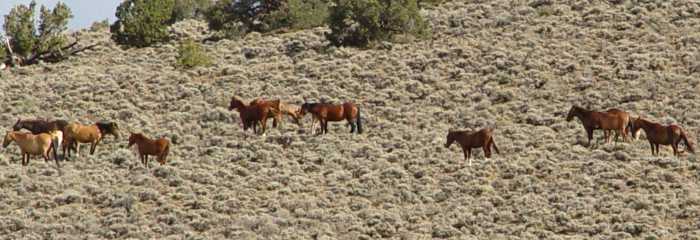
Mound House, NevadaThey've been around as long as anyone can remember. They are a few bands that roam south of the main Virginia Range herd, the largest publicly owned free-roaming horse herd in North America. Many live in the rolling hills near the Carson River in a community known as Mound House, located just a couple of miles east of Carson City. But their time on the range is running out.Mound House is split down the middle by US-50, a busy highway that runs from Carson City to several bedroom communities to the east. Once nicknamed "The Loneliest Road in America," this section of US-50 has become like most urban highways with several lanes of speeding urban traffic, typically made up of commuters who share the road with numerous "big rig" trucks. Mound House is similar to most northern Nevada communities. It is experiencing a great deal of growth. For the most part the horses have adapted to this growth and except for occasionally venturing into the edge of some neighborhoods to sample a lawn or a few rose bushes when things were quiet, they stayed pretty much to the open range eating their natural diet of cheat grass and native plants. Then some of the residents started putting water out for the horses. Not having to travel to their regular sources of water, the Carson River or a spring northwest of town, it was easier for them to hang around the residential areas. To make matters worse, some residents then started to leave out feed for the horses. Feeding wild horses is illegal in Nevada however there are a number of creative indirect ways people feed them. Someone with an apple tree would make sure that numerous apples "fell" outside the fence. Other people would feed their domestic horses and be "careless" in how the hay was handled, regularly leaving grass hay and alfalfa within reach of the wild horses. One neighborhood picked a spot in the sagebrush where everyone dumped their lawn clippings, which of course the horses would find and eat. A few others were more brazen, leaving tubs of grain in their front yards. |
Horses preparing to cross the highway
|
|
Aside from the fact that "domestic" diets are often too rich and harmful to wild horses, all this easy feed and water has made the horses lazy. Instead of roaming their natural range, a lifestyle that has kept these animals strong and healthy for generations, they now have taken on the attitude similar to "nuisance bears." They will wander out for a little while but they will always come back for the easy meals.
These are no longer wild horses. The residents, perhaps well intended, have caused them to become nearly tame "horse puppies," which adversely impacts their lifestyle and makes them a safety hazard to the community. Continue to Part Two
Return to KBR Wild Horse and Burro NewsReturn to KBR World of Wild Horses & BurrosGo to other Wild Horse LinksGo To
|
